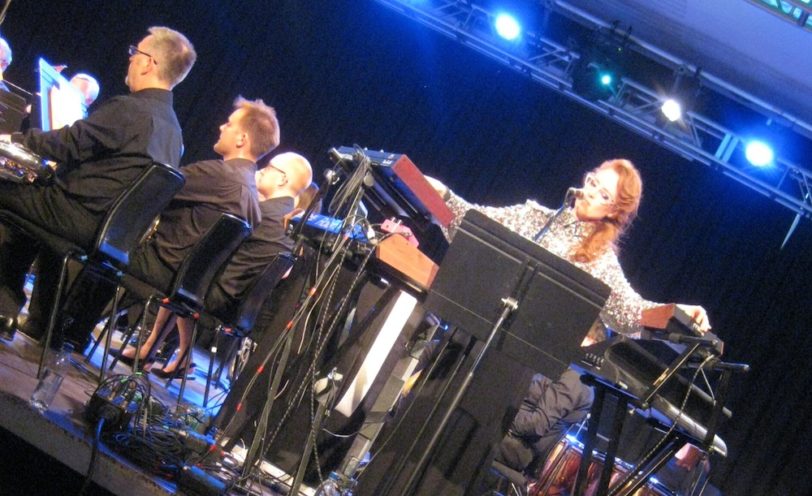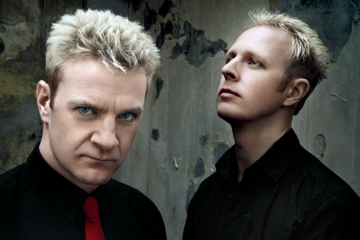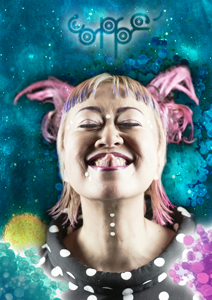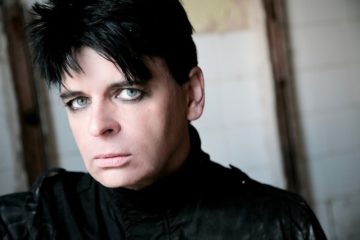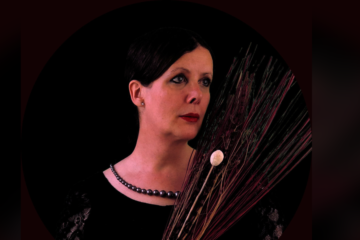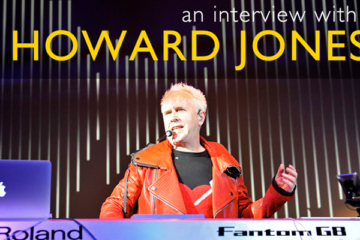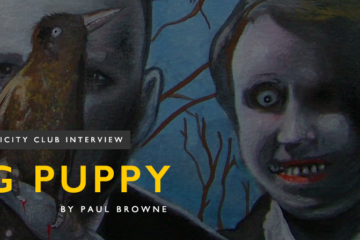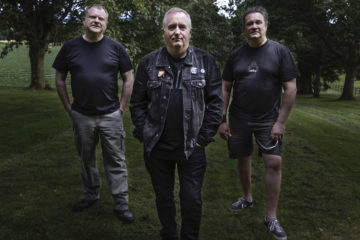Discussing Hannah Peel’s elderly alter ego…
Hannah Peel’s musical arc has chartered some intriguing landscapes over the years. Her original music box arrangements of classic songs by the likes of OMD, Soft Cell, New Order and Cocteau Twins gave her a very unique profile in the world of electronic music. But she also demonstrated that she was capable of collaborative ventures, notably with her band The Magnetic North as well as working alongside electronic music pioneers such as John Foxx.
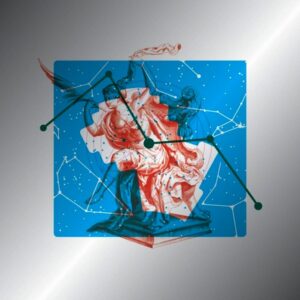
Following the release of her critically-acclaimed 2016 album Awake But Always Dreaming (see TEC review), Hannah Peel has been busy crafting her third album which employs her elderly alter ego. In fact Mary Casio: Journey To Cassiopeia has been a concept that Peel has been developing for some time, but it was a chance meeting with a brass ensemble that gave the project a new focus.
Commissioned for a musical project under the title of Tubular Brass (which was an adaptation of Mike Oldfield’s classic Tubular Bells), Peel saw the possibilities of combining electronic music and brass instruments. The result was a 7-piece movement that tracks the story of elderly stargazing electronic musician Mary Casio. Her lifelong dream is to leave her mining town home of Barnsley in South Yorkshire and journey into space via home-constructed, hand-made machines that ‘buzz and whirr’ alongside her ever-growing collection of antiquated analogue synths, which she started collecting ever since her father gave her a Casio keyboard as a child.
The first sampling of this project was the release of the haunting ‘Sunrise Through The Dusty Nebula’, a piece which breathes an oddly captivating sense of romance. Recorded in Barnsley, this and the other 6 segments that make up the Journey To Cassiopeia album combine to tell the story of Mary Casio’s journey to the stars.
As well as the forthcoming album, Peel has also embarked on a series of special showcase performances with the 29-piece brass ensemble. In July, this included a performance at London’s Southbank where audiences were treated to a small selection of Journey To Cassiopeia’s material.
Included with the performance was an on-stage interview with Hannah Peel in which she talked a little about the origins of Mary Casio, working with brass musicians and combining them with analogue synthesisers.
Here you are with a 29-piece ensemble. It must be really inspiring for you to have this kind of contact with all these instruments around you.
It’s been a wonderful collaboration and really amazing to work with everybody – and Sandy the conductor as well. It came from a kind of mishap of me posting something on Instagram – Electronic meets Brass – and then all of a sudden I’m writing a piece of music for these guys. So it’s been an amazing journey. That was two years ago and it’s just now starting to take off.
How much work has it taken from you actually writing the score to rehearsals, to fine-tuning, to maybe readjusting, to get it to this stage?
Around two years ago I was writing some tracks that I kind of just called Mary Casio because I liked the name – it’s my middle name, I never used to like it, I used to hate it – and I had Casio keyboards in there in the studio. If you’ve ever had one you know that when you press the beats to get the time going, the waltzes, and you get the kind of programmed chords in there. I used to pretend I was this character.
I shy away from my middle name, I don’t wear my glasses normally and so it felt quite nice to have this character. So it started off as an electronic piece and when the commission came I made more electronic tracks. I grew up playing brass bands, so it wasn’t like I didn’t know what a trombone sounded like or anything like that! So, when it came to actually putting the parts of the electronic into the brass arrangements, choosing actually which brass went where and which parts electronically – I should give away was actually the hardest because I didn’t want to give it all away, because I love some of the sounds that I’ve created with the Moogs and the Roland and things… So yeah, that was the process I suppose. Then we just gradually went through that and spoke to Sandy and he totally understood what I was getting at.
There’s a lot of bass in this piece – the lower register is really prominent. At one point backstage when you were doing the sub-bass and that went to, I think, the flugelhorn and the tubas, there was a bottle that started rattling on the table over there through the vibrations! So tell us about working in the lower register, of the richness of it?
Well I think it was really important because there was a trombone player and that, for me, gives me the sensation of what it feels like to be in the bottom end of the band. I love the feeling that you get when you’re surrounded by that sound and I felt that a lot of recordings don’t have that – especially with brass bands. I never get that sensation; it’s mostly cornet heavy – sorry cornets! And you get these amazing qualities, the oscillators and the resonances in the Moogs and things. So it felt like a really beautiful pairing to see what a tuba would sound like with the bass line.
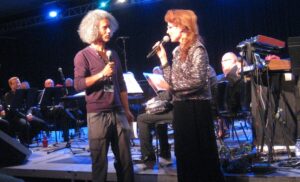
The brass band tradition is obviously strong in the north of England. It’s an international, universal thing as well – there are brass bands in India, in Africa, there’s a great brass band tradition in New Orleans. But the brass band tradition in the north of England – and I think the way that you’ve tapped into it – has this melancholy aspect to it. Tell us more about that.
Yeah, it’s something you can’t replace. There’s just something when this combination of instruments play together, that it really does give you a sense of memory and nostalgia. That for me has always been a part of my work. Even in just electronic stuff, there’s always an element of that there. I don’t know whether it’s from growing up in Yorkshire and kind of yearning for Ireland where I was born, or just taking that sound and taking it to a new place, which I found really interesting. But it’s irreplaceable and it’s so beautiful to hear a brass band.
So, electronic music – some people might think that’s it’s very male-dominated, that’s the cliché of the boys in their bedrooms, as it were, but woman have made a real contribution to electronic music over the years, people like Daphne Oram and Delia Derbyshire, and in the American jazz tradition as well, keyboard players like Patrice Rushen and Geri Allen who unfortunately just died. So women have been using electronics and electronic keyboards for a number of years, and they’ve really made a significant contribution. The PRS foundation has just launched the Oram award with Matthew Herbert. Tell us about the importance of women doing electronic music, and what advice would you give to young women who want to go into electronic music?
I suppose going back to Mary Casio as this character, I think when I started to learn about Delia Derbyshire and Daphne Oram and their stories they became role models for me to look up to because there isn’t that many. And I think it’s important that people young should find role models to have; something to pin on your walls and say “I want to do that”.
But when I found out about their life stories and what they went through and the fact that Delia really wasn’t kind of discovered until she’d passed away and they found all the tapes in her attic. So Mary Casio became a bit of a nod to that world of forgotten memories and people that maybe pass under our radar. We’re surrounded by digital things and get blasted with things all the time. Sometimes it’s just easier to follow mainstream music because you don’t want to have the hassle of looking further. But Mary was somebody that I felt maybe hadn’t ever left her home. She’d stayed in Barnsley for the whole of her life and she was this kind of pioneer and she had these electronic instruments in her back garden and a telescope, and she would stargaze and she would have this dream of going to Cassiopeia.
So in her eighties, she decides that she’s going to go, she’s going to leave Earth and for the first time leave her hometown and travel to space. I think that was a nod for me to……we shouldn’t be forgetting people and not even electronic people, but everything, even old people really. It’s very sad – a lot of people get forgotten. So that was my nod to those people that I see as role models.

What about the voice at the end of the piece?
That’s an actual recording of my grandfather in 1927 in Manchester Cathedral and he’s singing a piece by Handel. He was one of the first voice sopranos to be recorded and he was 13 at the time. The story is that he made this recording and the wax hadn’t set properly so the record label came back and said “Oh we want to record it again” and I think the day after, his voice had broken!
It’s all about the timing isn’t it?!
I knew about it but I never had a copy or anything, so ripped it off YouTube and that’s what you’re hearing. So it became a part of her journey because that’s the last piece. So this is 3 pieces out of 7, so normally it’s 40 minutes long. And I chose the kind of pieces that I felt tell the story the most.
So the second piece is called ‘Sunrise Through The Dusty Nebula” and it’s after she’s left Earth and you go to that kind of plateau where everything just goes silent and then she looks behind her and sees the sun coming up over the Earth and all the people that she’s left behind. And then we go to ‘Life Is On The Horizon’, which is a little bit further along, and at the very end she reaches ‘The Planet Of Passed Souls’. I didn’t write a piece called ‘Cassiopeia’ – I kind of left it to us to decide whether she makes it there or not.
So in my mind it was like she went to a planet where it sounds like the wind and the rain and that’s the sample of in my caravan on a stormy night. And she goes to this planet and then through the wind and the rain, these voices and this music box, and obviously someone from her past comes singing through the clouds to remind her. So I suppose in a way it kind of represents whether she makes it or not – is this just all a figment of her imagination? Is she dreaming, and the beauty of us being able to dream and go there, or is it that this is her final last breath as she passes into another life… or another realm, shall we say?
Mary Casio : Journey To Cassiopeia is released on 22nd September and can be pre-ordered via https://hannahpeel.tmstor.es/
Hannah Peel has several live shows lined up for this year including:
5th Aug Edinburgh Festival, 12the Aug LeeFest Music Festival, Edenbridge, 23rd Sept Liverpool Philharmonic Hall, Liverpool, 30th Sept, The Arc Concert Hall, Stockton-on-Tees, 21st Oct, Barnsley Civic Theatre, Barnsley.
Ticket details: http://www.hannahpeel.com/live/. Please see the Electricity Club Event Calendar for details on these performances as well as other upcoming concerts.
http://www.hannahpeel.com/
https://www.facebook.com/HannahPeelMusic
https://twitter.com/Hanpeel
Special thanks to Barry Page.


